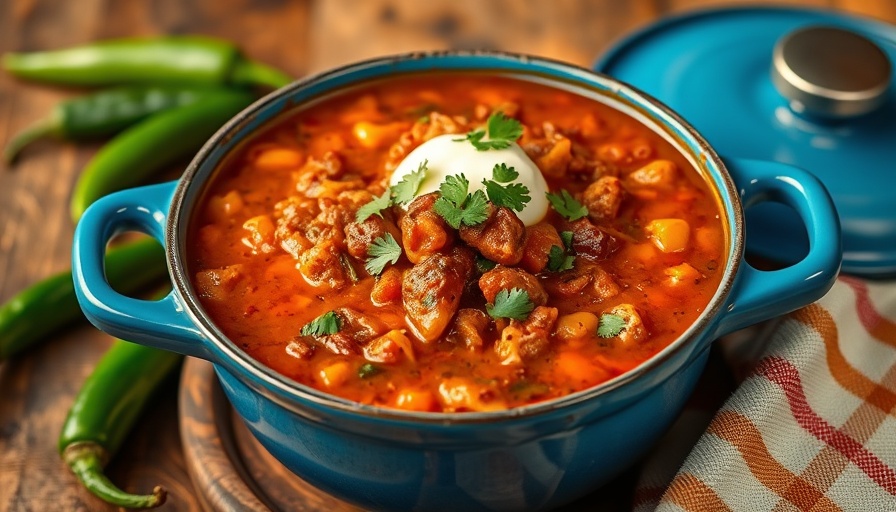
The Great Chili Debate: Soup or Stew?
At first glance, chili might seem straightforward: a beloved dish enjoyed across the U.S. and beyond. Yet, when it comes to categorizing this hearty concoction, it's nothing short of culinary chaos. Is chili a soup? Is it perhaps a stew? Or could it be something entirely its own? If you're passionate about home cooking or simply enjoy a delicious bowl on a chilly day, understanding the nuances of chili can elevate your culinary experience.
What Really Defines Chili?
Chili is a fusion of bold flavors, textures, and ingredients, often including ground meat, beans, tomatoes, and various spices. Classic Texas-style might boast a beanless, meaty approach, while other regions experiment with their styles, claiming unique twists. However, the common thread? Wherever you are in the U.S., chili is typically prepared using techniques that distinguish it from the soup category.
According to culinary experts, the distinction between soup and stew largely lies in their cooking techniques and consistencies. Soups are meant to be lighter, often made with simmered ingredients floating in flavorful broth, whereas chili is stewed low and slow, resulting in a richer, chunkier texture. As Thrillist aptly summarizes, chili typically contains more solids than liquids. You wouldn’t puree chili like a soup, so categorizing it as a stew has become the more accurate description.
Decoding the Differences
The difference is mainly about liquid to solid ratios. As our friends at Chowhound point out, a proper chili has enough thickness to accommodate toppings like cheese or be served over hot dogs, which further justifies its identity as a stew rather than a soup. Each ingredient in chili melds together to create a deliciously thick sauce-like base, something that simply wouldn’t work in a typical soup.
A Dish with Identity: Chili's Culinary Background
Interestingly, chili has evolved over time and cultures. It bursts with influences that draw from Native American, Mexican, and Spanish cuisines, creating a dish that refuses to be pigeonholed. For years, chili has inspired competition—whether it's at cook-offs or local cafes. It's not merely a matter of flavor; it’s a culinary phenomenon that brings people together to debate and share recipes. This may be part of the charm that chilli enthusiasts find so delightful, despite its controversial classification.
Expert Insights: What Do the Chefs Say?
When culinary professionals weigh in, many echo the sentiment that chili stands apart rather than fitting neatly into either the soup or stew category. As celebrity chefs assert, chili embodies its unique culinary identity. The International Chili Society even states that chili isn’t a soup, suggesting it deserves its classification as its own entity. It’s a hot topic among enthusiasts, but one thing is clear: chili, in its many forms, sparks joy.
Why Does it Matter?
Understanding whether chili is a soup or a stew goes beyond semantics. It’s emblematic of broader culinary practices and preferences, representing regional identities and cultures intersecting in a single pot. For home cooks, recognizing these distinctions can not only influence recipe development but also enhance the appreciation of this hearty classic. So next time you whip up a batch, whether with beans or without, remember you're part of a rich story that transcends categories.
If you enjoyed this story, why not stay connected? Join Las Vegas Local Unplugged on Facebook and YouTube for exclusive local information. @lasvegaslocalunplugged
 Add Row
Add Row  Add
Add 



Write A Comment